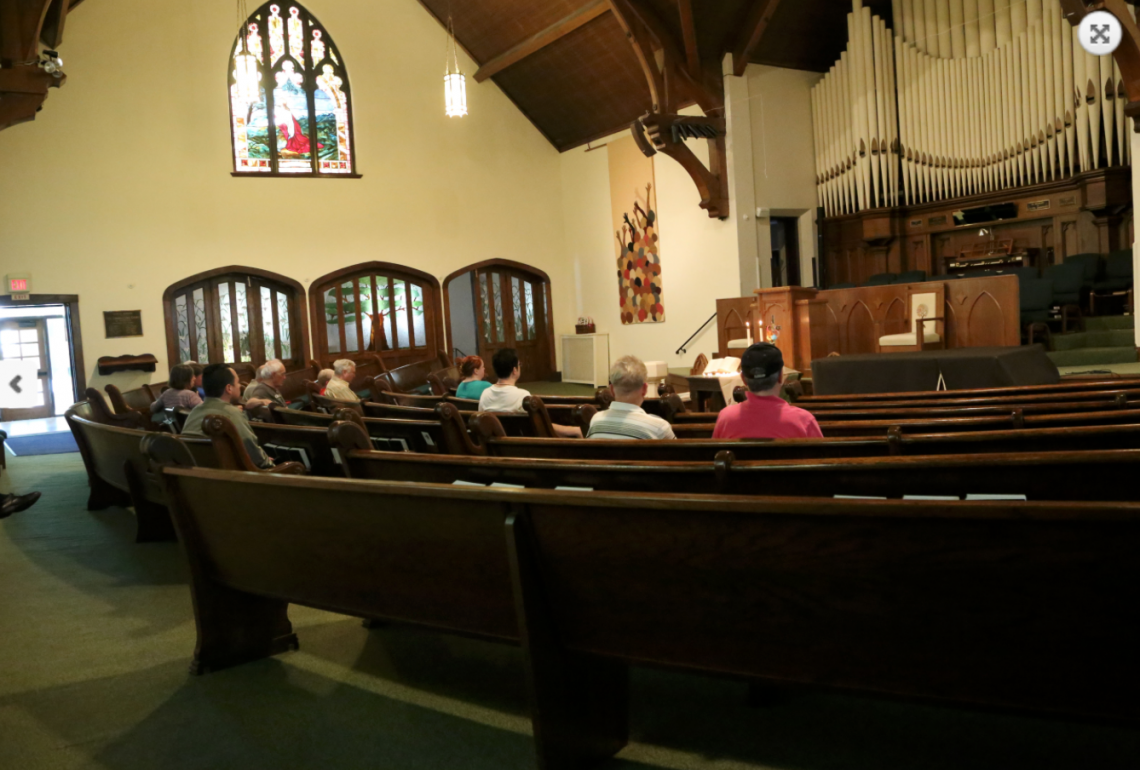
Week 4: Learning Not to Judge a Book By Its Cover At First Congregational
After a busy week of multiple observations and three separate interviews at Our Saviour’s, this past week provided a bit of a break as I headed to a smaller church.
However, while there were less services to observe and interviews to conduct, this particular church brought a lot of anticipation and excitement. Founded in 1833, First Congregational stands as the oldest church in Naperville. While I was not entirely sure what to expect, this church falls within the “traditional” worship category, so I was not surprised when I found its sanctuary adorned with gorgeous stained glass windows and complemented by the large pipe organ that stretched across the front of the room.
In many ways, walking into this church felt like traveling back in time. The building itself has been around since the early 1900s, and I got the sense that they had made a great effort to preserve the church to reflect its long history. With their use of hymnals and the positioning of the pulpit, First Congregational’s worship service is the most traditional service I have observed so far.


When you think of churches that match my description of First Congregational, I’m sure you have a list of character traits running through your mind:
- Older Congregation
- Opinionated
- Hates Change
- Stuck in their old ways
- Conservative
Surprisingly, only one of those bullet points is actually applicable.
This week, I was challenged by the nature of the congregation, not because they seemed stuck in their old ways, but because they are more progressive than any church I have ever set foot in.
If nothing else, the URL address of their website says it all:
loveandjustice.org
First Congregational church is committed to “to love one another as God loves us – freely and without reservation. [Their] unconditional love is inclusive of all God’s people. [They] denounce acts of discrimination and violence against any person. [They] welcome all who come to this place of worship and whose desire is to praise God and to seek Christ. You will find First Congregational Church to have an accepting, caring and nonjudgmental spirit where faith is renewed and power for living is found. A central foundation of [their] church is a dedication to justice and peace issues.”
In my search to find the solution to prevent superficial church shopping, I have, once again, made a superficial assumption.
Even in my quest to prevent it, I myself have been superficial. This realization has made it hard to identify just how to try to prevent superficiality in church shopping.
Maybe the key to this issue is self-awareness.
If there’s anything I can take away from my initial findings, its that a worshiper’s perception of a church and its worship services often varies from the intentions of the Pastors and Worship directors executing the services week after week.
So how can churches be more intentional in conveying their desires for worship?
I am most certainly not qualified to take a stance on this issue. But what I can say is that it is less common among larger churches where intentionality between pastors and the community becomes nearly impossible due to the size of the congregation.
In smaller churches such as First Congregational, the worship is community-oriented. Rather than being a service that is executed for the congregation, First Congregational’s service is a dialogue between the worship leaders and the people in the pews.
During the time of the prayers of the people, congregants vocalize their prayers in a seemingly “popcorn prayer” style. This practice has the potential to bring the congregation closer together as they hear each others prayers resonating throughout the room.
Even the announcements foster a sense of community. This is accomplished simply by the way the Pastor engages with everyone in the room. You get a sense that he knows everybody, that he has sat and prayed with everybody, and that he extends an inviting hand to all. It might seem odd that something so simple as the reading the announcements can convey the very nature of the service and the church itself, but the quick snapshot it gave was incredibly powerful.
Going into this week, I was excited to learn about the vast history of First Congregational Church. Now, despite my misgivings about superficiality, I leave with a heightened sense of self-awareness. As I continue my research, I will be more cautious of the stereotypes that come with church labels, and will strive to approach my observations with an even more open mind.
